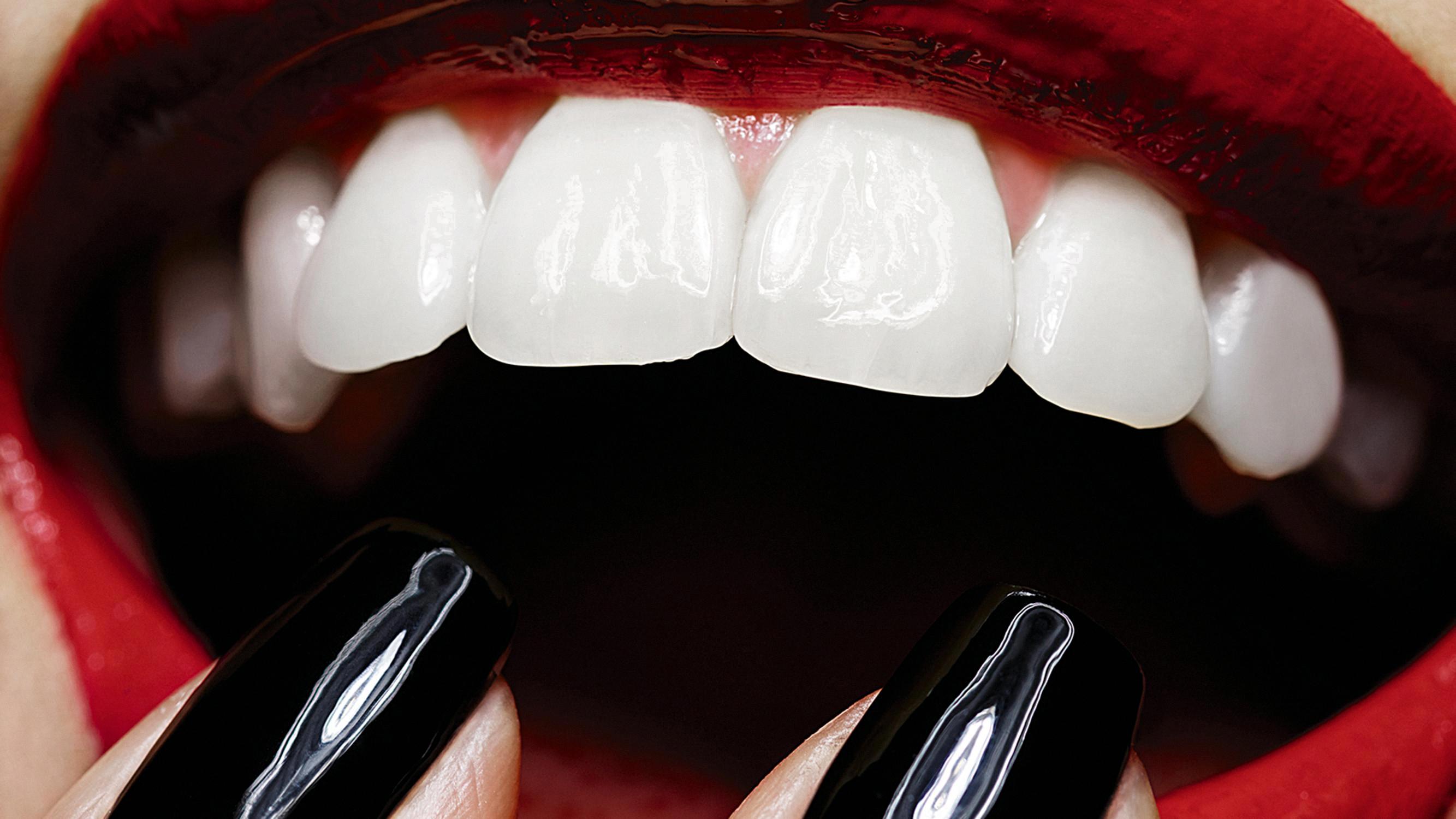In our pursuit of the perfect smile, teeth whitening has become increasingly popular. People all over the world are looking for ways to achieve that bright, white, and confident grin. But what exactly makes teeth white, and what are the whitest teeth in the world? Let’s dive into the world of teeth and explore the secrets of a dazzling smile.
First and foremost, it’s important to debunk a common myth – teeth aren’t naturally perfectly white. Even if you were to never expose your teeth to any staining or discoloring agents, they would still have a slightly off-white appearance. This is because the visible part of your teeth, known as the enamel, and the underlying layer called dentin, together create the color of your teeth.
Enamel is the outermost layer of your teeth and is translucent, meaning it allows the underlying dentin’s color to show through. Dentin, on the other hand, is naturally yellowish in color. The combination of these two layers gives teeth their unique shade.
Now, let’s talk about the whitest teeth in the world. While it’s impossible to determine the absolute whitest shade of teeth, professionals often refer to a shade called B1 as one of the whitest. B1 is a bright, pure white shade that is often used in dental procedures to achieve a pristine, natural-looking smile. If you’re looking for a slightly darker shade of white, you might consider comparing it to A1, which resembles a more off-white or ivory color.
So, how can you achieve and maintain a beautifully white smile? Here are seven teeth whitening tips to help you on your journey:
1. Dental Cleaning: Regular dental cleanings by a professional can remove surface stains and tartar, giving your teeth a fresher and cleaner appearance.
2. Custom Teeth Whitening Trays: Dentists can create custom-made trays that fit your teeth perfectly, allowing for effective and even distribution of whitening agents.
3. Night-Time Whitening Routine: Some whitening products are designed to be used overnight, providing a gentle and gradual whitening effect while you sleep.
4. Avoid Stain-Causing Foods and Drinks: Certain foods and beverages, such as coffee, tea, red wine, and dark-colored berries, can stain your teeth over time. Limiting your intake of these substances can help maintain a whiter smile.
5. Quit Smoking: Smoking not only poses numerous health risks, but it can also cause severe staining of the teeth. Quitting smoking can greatly improve the color and overall health of your teeth.
6. Eat Natural Teeth Whitening Foods: Incorporating crunchy fruits and vegetables like apples and celery into your diet can help remove surface stains and promote saliva production, which naturally cleanses the teeth.
7. Practice Excellent Dental Hygiene: Regular brushing, flossing, and using mouthwash are essential for maintaining good oral health and preventing stains and discoloration.
Remember, achieving a white smile is a gradual process, and everyone’s teeth are unique. It’s always best to consult with a dental professional before starting any whitening treatments to ensure they are safe and appropriate for your specific needs.
While Denmark may have been ranked as having the cleanest teeth in the world, it’s important to remember that the pursuit of the whitest smile is a personal journey. By following proper oral hygiene practices and considering professional teeth whitening options, you can achieve a bright and confident smile that suits you best.
Who Has The World’s Whitest Teeth?
According to a survey, Denmark has been ranked as the country with the world’s whitest teeth. With a score of 0.4, this indicates that the average citizen in Denmark has less than half a tooth that requires attention or has any dental problems. Here are some key points about Denmark’s dental health:
1. Dental Hygiene: The high ranking suggests that the people of Denmark have excellent dental hygiene practices. Regular brushing, flossing, and visits to the dentist likely contribute to their clean and healthy teeth.
2. Access to Dental Care: Denmark’s healthcare system is known for its accessibility and quality, which includes dental care. The availability of dental services and the emphasis on preventive care might contribute to the overall oral health of the population.
3. Education and Awareness: Denmark places a strong focus on education and promotes awareness about dental health. Schools, healthcare providers, and community programs likely play a role in teaching proper oral hygiene habits from an early age.
4. Diet and Lifestyle: While not explicitly mentioned in the survey, a balanced diet and a healthy lifestyle can have a positive impact on dental health. A diet low in sugary foods and drinks can help prevent tooth decay and discoloration.
5. Cultural Factors: Cultural factors, such as societal norms and values, may also contribute to the emphasis on dental health in Denmark. It’s possible that maintaining a healthy smile is considered important for personal well-being, social interactions, and professional success.
Denmark has been recognized for having the world’s whitest teeth based on the survey’s findings. The high score suggests a combination of good dental hygiene practices, accessible dental care, education, awareness, diet, lifestyle, and cultural factors may contribute to the overall dental health of the Danish population.

What Is The Whitest Color Of Teeth?
The whitest shade of teeth is often referred to as b1. This shade is considered to be one of the brightest and most vibrant shades of white for teeth. If you are looking for a natural shade of white, you can compare it to a1 tooth color. A1 is slightly darker than b1, offering a more subtle and less intense shade of white.
How Do You Get The Whitest Teeth?
To achieve the whitest teeth possible, follow these seven tips:
1. Dental Cleaning: Schedule regular dental cleanings to remove surface stains and tartar buildup. A professional cleaning can significantly improve the appearance of your teeth.
2. Custom Teeth Whitening Trays: Consider getting custom-fit teeth whitening trays from your dentist. These trays are filled with a whitening gel and worn for a specified period. They provide a more precise and effective whitening treatment compared to over-the-counter products.
3. Night-Time Whitening Routine: Opt for whitening products that can be used overnight. This allows the whitening ingredients to work on your teeth for an extended period, resulting in more noticeable results.
4. Avoid Stain-Causing Foods and Drinks: Reduce or eliminate consumption of foods and drinks that are known to stain teeth, such as coffee, tea, red wine, and dark-colored berries. If you do indulge in these items, rinse your mouth with water afterward or brush your teeth to minimize staining.
5. Quit Smoking: Smoking not only poses serious health risks but also leads to yellowing and discoloration of teeth. Quitting smoking will improve both your overall health and the whiteness of your teeth.
6. Eat Natural Teeth Whitening Foods: Incorporate natural teeth whitening foods into your diet, such as apples, strawberries, celery, and carrots. These crunchy fruits and vegetables help scrub away surface stains and promote saliva production, which helps in maintaining oral hygiene.
7. Practice Excellent Dental Hygiene: Brush your teeth at least twice a day and floss daily to remove plaque and prevent stains. Consider using a whitening toothpaste or mouthwash to help maintain the whiteness of your teeth.
Remember, it’s essential to consult with your dentist before starting any teeth whitening treatment to ensure it is safe and suitable for your specific dental needs.
Is It Possible To Have Pure White Teeth?
It is not possible to have pure white teeth. Teeth, in their natural state, are not perfectly white. The visible part of teeth is made up of dentin and enamel, which have a slightly off-white color. Even if teeth never come into contact with substances that can cause discoloration, they will still have a natural shade that is not pure white.
There are several factors that can contribute to the color of teeth. These include genetics, age, and lifestyle choices. Some people may naturally have teeth that are whiter than others due to their genetic makeup. As we age, our teeth tend to become more yellowish or dull as the enamel wears down and exposes more of the underlying dentin.
Additionally, lifestyle choices such as smoking, consuming certain foods and beverages (like coffee, tea, and red wine), and poor oral hygiene can cause teeth to become stained or discolored. These external factors can further affect the natural color of teeth and make them appear less white.
While it is not possible to have pure white teeth naturally, there are options available to enhance the whiteness of teeth. Professional teeth whitening treatments, both in-office and at-home, can help remove stains and lighten the color of teeth. However, it is important to note that even with whitening treatments, the result may not be pure white, as the natural shade of teeth will still influence the final outcome.
Pure white teeth are not possible in their natural state. Teeth have a slightly off-white color due to the composition of dentin and enamel. Various factors, including genetics, age, and lifestyle choices, can affect the color of teeth. While teeth whitening treatments can help improve the whiteness of teeth, achieving a pure white color is not realistic.

Conclusion
Teeth are not naturally perfectly white, contrary to popular belief. Even without any exposure to staining substances, teeth still have a slightly off-white appearance due to the composition of dentin and enamel. However, maintaining good dental hygiene and following teeth whitening tips can help achieve a brighter and healthier smile.
Denmark ranks as the country with the best dental health, with an average citizen having less than half a tooth that needs attention or has problems. This indicates a high level of oral hygiene and care among the Danish population. It is important to note that regular dental cleanings and the use of custom teeth whitening trays can contribute to maintaining clean and healthy teeth.
To achieve whiter teeth, it is recommended to establish a night-time whitening routine and avoid consuming stain-causing foods and drinks. Quitting smoking is also crucial, as tobacco can lead to severe tooth discoloration. Additionally, incorporating natural teeth whitening foods into one’s diet and practicing excellent dental hygiene can further enhance the appearance of teeth.
While teeth are not naturally perfectly white, taking proper care of dental health and following teeth whitening tips can help individuals achieve a brighter, healthier, and more confident smile.
